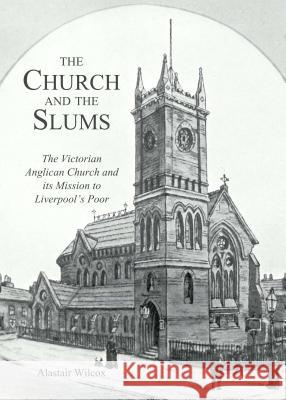The Church and the Slums: The Victorian Anglican Church and Its Mission to Liverpool's Poor » książka
The Church and the Slums: The Victorian Anglican Church and Its Mission to Liverpool's Poor
ISBN-13: 9781443854214 / Angielski / Twarda / 2014 / 253 str.
The Church and the Slums: The Victorian Anglican Church and Its Mission to Liverpool's Poor
ISBN-13: 9781443854214 / Angielski / Twarda / 2014 / 253 str.
(netto: 218,20 VAT: 5%)
Najniższa cena z 30 dni: 223,04
ok. 30 dni roboczych
Bez gwarancji dostawy przed świętami
Darmowa dostawa!
Organised religion played such a central part in Victorian life that it is impossible to understand this era without some reference to it. Yet the question, which worried the Victorians, still remains, how religious was the mass of Victorian society? Recent scholarship has challenged the orthodoxy that the working classes, and the working classes of large urban centres in particular, were irreligious. Yet Liverpool, with its large migratory population, including Roman Catholics from Ireland and Nonconformists from Wales and Scotland, appeared to offer unpromising ground for the Anglican Church to sow its seed. Within the city, Liverpool's notorious slums seemed to offer the most barren ground of all. What strategies did the Anglican clergy employ to make their churches work at a grassroots level? How could they overcome the problems they faced, which ranged from the hostility of the local community to severe financial constraints? How helpful was the advice dispensed by Church handbooks in dealing with these challenges? More important, is it now possible to estimate the success in gaining not only worshippers, but a wider penumbra of working class adherents to church-based activities?Some of Liverpool's more aristocratic churches were overwhelmed by the encroaching city slums, and the reaction of at least one clergyman was to retreat within his vicarage, and 'shut up shop'. However, other clergy set about energetically working the slums. Largely Oxbridge men, with a very different background in social and educational terms to their flock, they made surprising progress. By drawing upon a variety of local sources, including many hitherto unused, this book contends that it is possible to evaluate the success of the Anglican Church in the slums. The Church had successes not only to be judged solely by the number of working class worshippers, but also by the uses the local community made of rites of passage, philanthropic activities and the clubs and societies offered by the Anglican Church in Liverpool.This book is aimed at readers interested in researching family and local history as well as those following wider national trends in religious history.











